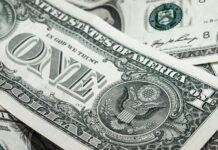The backyard nesting season is well under way here on the ridge. The first complete bluebird nest held five eggs on March 26. As I write this on April 4, I have three complete bluebird nests, one Carolina wren nest (five eggs), one phoebe nest (five eggs) and several more bluebird and chickadee nests that are ready to receive eggs.
So I was really anticipating the publication of Julie Zickefoose’s latest book, The Bluebird Effect: Uncommon Bonds with Common Birds (2012, Houghton Mifflin, $28).
It was published just a few weeks ago, and it does not disappoint. Julie is an artist, writer, wildlife rehabilitator, radio commentator, mom, wife and a personal friend. I’ve known her for nearly 20 years.
Contents
The Bluebird Effect is a collection of 25 essays describing her experiences with birds that have come under her care. Clearly she has the patience of Job. Among the patients she describes are bluebirds, chickadees, Carolina wrens, chimney swifts, phoebes and a savannah sparrow.
In describing the book, Julie explains, “Each bird or animal I help as a licensed wildlife rehabilitator leaves a big mark on my heart and an inevitable trail of tracks across my thoughts.”
The Bluebird Effect is a record of those marks and tracks. The title of the book refers to one particular bluebird that her husband rescued from a sharp-shinned hawk attack. She formed an uncommon bond that lasted for almost seven years with this particular bird. To read this chapter is to understand the nature of an “uncommon bond” with a bird.
One chapter is devoted to ivory-billed woodpeckers, a bird with which Julie obviously has no personal experience. It’s wonderful to simply enjoy Julie’s take on this probably extinct species.
It also offers one of my favorite illustrations in the book (p. 245). It shows a male ivory-bill delivering a large grub to two hungry nestlings at the nest hole while the female flies by in the background.
Artwork
Speaking of illustrations, the book includes more than 300 paintings and pencil drawings. Many of the drawings are mere sketches, but the color paintings are stunning. I’m actually considering buy a second copy so I can remove and frame some of the color plates.
In addition to the aforementioned ivory-bill print, frameable paintings include a winter scene featuring a pair of bluebirds (p.13), a nest full of barn swallows being menaced by a large black rat snake (p. 46), a brood of Carolina wrens fledging from a nest in a bucket strapped to a protected downspout (p. 59.), a pencil drawing of an osprey perched on a tropical beach (p.106), a portrait of Julie’s daughter Phoebe with a rescued feathered phoebe (p. 175), a self-portrait of the author being followed by a curiously friendly ruffed grouse (p.202), and a snowy winter scene populated by a small flock of cardinals (p.296).
I suspect Julie’s favorite painting might be the portrait of Charley (p. 331), the chestnut-fronted macaw she acquired in 1989. She explains why parrots make terrible pets and many of the lessons that led to that understanding.
Secret
You’ll also learn the surprise Charley kept to himself for 23 years.
A favorite subject for Julie’s pencil and brush are young birds. Scattered throughout the text are many illustrations of everything from hatchlings to fledglings ready to take that initial leap of faith.
Among these illustrations are young robins, chickadees, starlings, barn swallows, chimney swifts, ruby-throated hummingbirds, phoebes, piping plovers, sandhill cranes, turkey vultures and cardinals.
Lesson. The most important lesson in The Bluebird Effect concerns the impact of outdoor cats on birds. As only an experienced avian rehabilitator could, Julie explains, “ … when catching a bird, housecats almost always bite down hard on the right wing where it joins the bird’s body, crushing the shoulder joint so that their prey is instantly and permanently disabled … Whatever feral cat advocates and laissez-faire cat owners may rationalize about hunting as natural behavior for felines, this preventable carnage by an introduced predator is unnatural and unconscionable … talking to cat owners on the telephone helps me understand the denial and misplaced sentimentality that permits the killing to go on.”
The Bluebird Effect is a terrific read and a feast for the eyes. Buy! Buy! Buy!













How nice to see this here! Thank you, Dr. Scott, for touting my book. I’m so glad you like it. I dedicate it to all the birds I’ve known and loved.